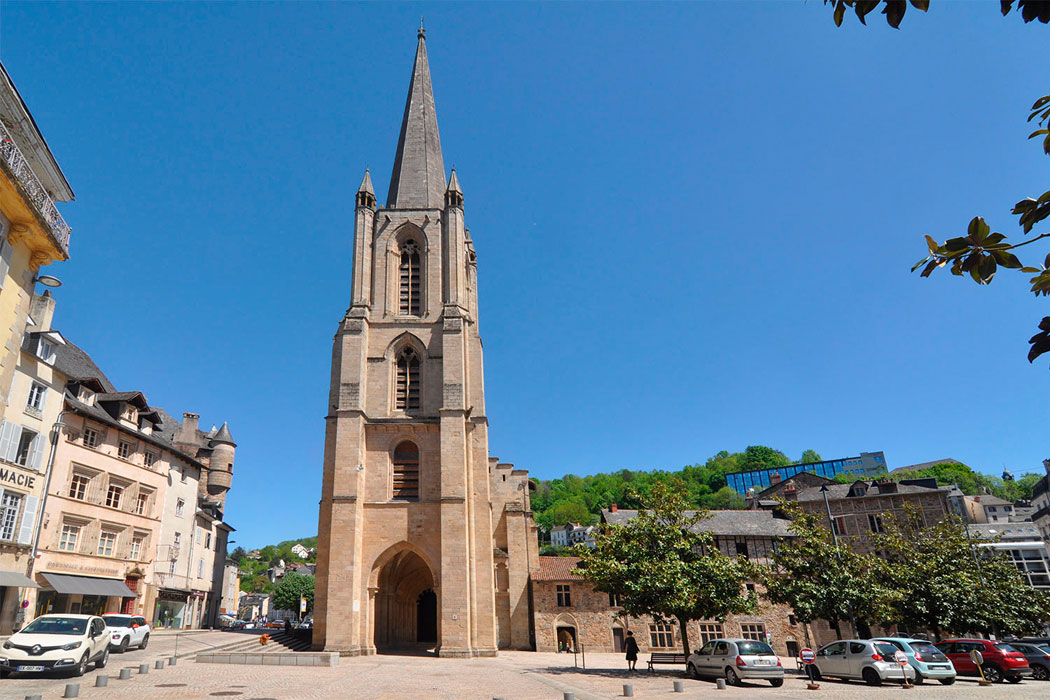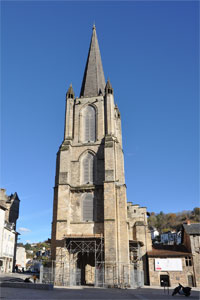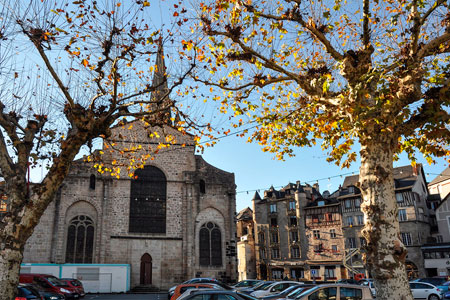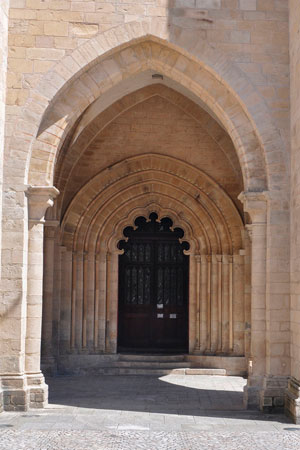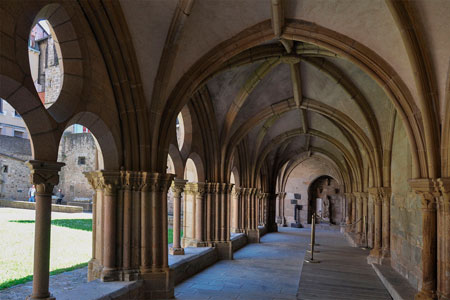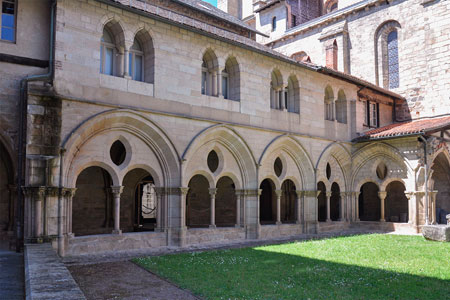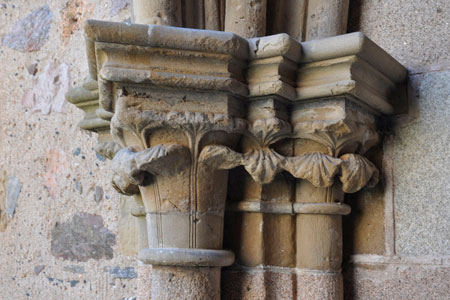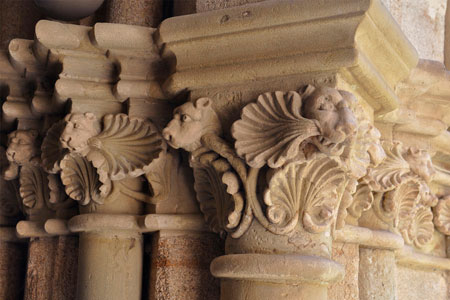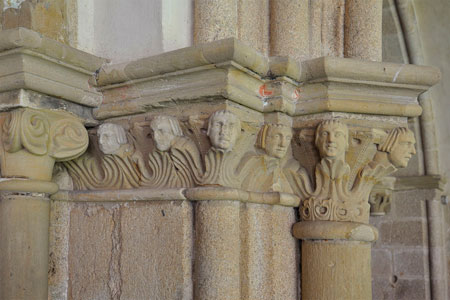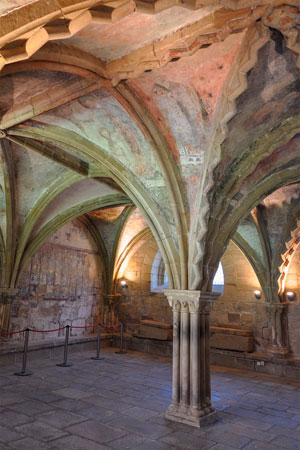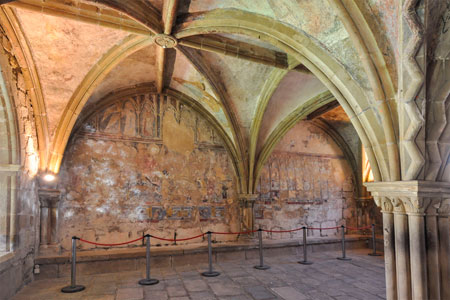According to tradition, the origins of the Saint-Martin de Tulle monastery date back to the first quarter of the 6th century. It is believed that the monastery was preceded by a hermitage founded by Saint Martin himself (4th century). However, it seems more plausible to attribute its foundation to Calminius (or Calmin, 7th-8th centuries) and his wife Namadia, in the 7th century. These figures also promoted the creation of the abbeys of Mozac (Puy-de-Dôme) and Saint-Chaffre (Haute-Loire, around the year 680).
Subsequently, the site suffered various adversities, such as a Norman invasion in the mid-9th century. The monastery was restored by the viscounts of Tulle, Adhémar des Échelles († c. 937) and his wife Gauzla, who brought monks from Saint-Savin (Vienne) and provided financial support. Once recovered, the monastery enjoyed a long period of prosperity. In 1103, Abbot Guillaume de Carbonières initiated the construction of a new church, which had to be restored after suffering damage during a military episode in 1210.
In 1317, Pope John XXII transformed the Benedictine monastery into a cathedral, establishing it as the center of a new diocese created at the expense of Limoges. Arnaud de Saint-Astier, abbot of Saint-Martin, became the first bishop of the new diocese. The cathedral was dedicated to Notre-Dame. Despite this change, the monastery remained active until 1514, when a bull issued by Pope Leo X secularized it, replacing the monastic community with a collegiate chapter consisting of sixteen canons. Meanwhile, during the second half of the 14th century and the first half of the 15th, the town of Tulle and the cathedral itself suffered the effects of the Hundred Years' War.
The current cathedral church has been preserved with many modifications. Although remains of earlier constructions have been found, the present building corresponds to the one built from 1103 onwards, with renovations from the 13th and 14th centuries and significant losses, such as the apse and transept. It has three naves divided into five bays. The original apse contained an ambulatory with four radial chapels, along with two more chapels in the arms of the lost transept. On the western façade, there is a bell tower situated above the entrance porch. To the south of the church, there is an irregularly shaped cloister that has also undergone modifications. The chapter house, dating from the 13th and 14th centuries, still preserves important remnants of mural decoration.

Chasse of Saint Calminius
Where this monastery of Tulle is mentioned (Thuellam)
- ANDRAULT-SCHMITT, Claude (2007). Tulle, ancienne abbaye Saint-Martin (actuelle cathédrale). Congrès archéologique de France, 163e session, 2005, Corrèze. Société française d’archéologie
- BEAUNIER, Dom (1912). Abbayes et prieurés de l'ancienne France. Vol. 5. Bourges. Abbaye de Ligugé
- CANTIÉ, Geneviève (1990). Saint-Martin de Tulle, découverte d'un édifice carolingien. Bulletin Monumental, vol. 148
- CHAMPEVAL, Jean-Baptiste (1903). Cartulaire des abbayes de Tulle et de Roc-Amadour. Brive: De Roche
- DU TEMS, Hugues (1775). Le clergé de France, vol. III. París: Brunet
- FAGE, René (1923). Tulle. Congrès archéologique de France. LXXXIV session tenue a Limoges. París: Picard
- GOUSTINE, Luc de (sd). Tulle, sa cathédrale Notre-Dame son cloître monastique. Carrefour Ventadour
- MASSONI, Anne (2018). Tulle, l’un des seize diocèses créés par le pape Jean XXII en 1317-1318. Archives en Limousin, 2018, núm. 50
- NIEL, L.-L. (1884). Les origines de Tulle et de son abbaye. Bulletin de la Société scientifique historique et archéologique de la Corrèze, vol. 6
- SAINT-MAUR, Congregació de (1720). Gallia Christiana in provincias ecclesiasticas distributa. Vol. 2. París: Typographia Regia
- VERYNAUD, Georges (1976). Histoire de Tulle. Limoges: C.R.D.P.
